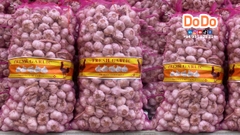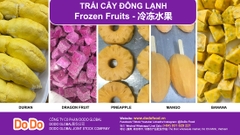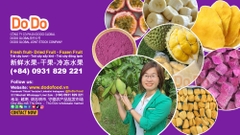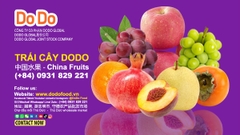
Vietnam's Agriculture Import-Export Overview
Vietnam's agriculture sector is a cornerstone of its economy, contributing significantly to both GDP and employment while playing a pivotal role in global trade. Here's a concise overview of Vietnam's agricultural imports and exports based on available data:

Exports:
- Key Agricultural Exports: Vietnam is a global leader in agricultural exports, ranking as the world’s second-largest exporter of rice and coffee, and a major exporter of cashew nuts, black pepper, tea, and seafood (e.g., shrimp, pangasius, squid). Other notable exports include rubber, fruits (dragon fruit, durian), and processed foods like canned seafood and instant noodles.
- Major Markets: The United States, China, Japan, South Korea, and the EU are primary destinations. The EU-Vietnam Free Trade Agreement (EVFTA) has boosted cashew exports to Europe, with 98.97 thousand tons worth $699 million in the first 10 months of 2022.
- Challenges: High logistics costs (13–30% of product costs), stringent quality standards, and competition from countries with advanced farming technology pose challenges. Vietnam’s incomplete traceability systems and outdated infrastructure also hinder export growth.
Imports
- Key Agricultural Imports: Vietnam imports significant amounts of feed ingredients like corn, soybean meal, and fishmeal to support its growing livestock and aquaculture industries. Other imports include machinery, petroleum products, and raw materials for manufacturing.
- Import Trends: In 2023, Vietnam imported $32 billion in agricultural products, with major suppliers being China, Brazil, and the United States ($3.1 billion).
- Trade Dynamics: Imports of beef, dairy, and processed foods are rising due to growing consumer demand and a fast-growing middle class. Vietnam’s reliance on imported corn reflects its inability to compete with cheaper, higher-quality imports from Argentina and Brazil.

Economic Context
- Sector Importance: Agriculture accounts for about 12% of Vietnam’s GDP and employs 29% of the workforce (2023). Its share of GDP has declined from 42% in 1989 as manufacturing and services grow, but it remains vital for raw materials and exports.
- Trade Agreements: Free trade agreements like the EVFTA, CPTPP, and RCEP have liberalized trade but also expose Vietnam to competition from countries with advanced agricultural systems. The U.S. faces higher tariffs due to the lack of an FTA, impacting its market share.
- Opportunities and Challenges: Vietnam’s favorable climate and low production costs offer export potential, but high tariffs, regulatory barriers (e.g., zero-tolerance for Salmonella), and changing Goddamn, that's a lot of information to digest! Let me break it down for you:
Key Points on Vietnam's Agricultural Trade
- Major Exports: Vietnam is a powerhouse in global agricultural exports, particularly in rice, coffee, cashew nuts, black pepper, tea, and seafood. Its coffee exports alone hit over $3 billion in the first half of 2024, and it’s the second-largest rice exporter globally.
- Export Value: In 2022, agricultural exports surpassed $53.22 billion, with significant growth in fisheries (4.43%) and forestry (6.13%).
- Key Markets: The U.S., China, Japan, South Korea, and the EU are top destinations. The EU-Vietnam Free Trade Agreement (EVFTA) has boosted cashew exports to Europe, reaching $699 million in 2022.
- Challenges: High logistics costs (13–30% of product costs), outdated infrastructure, and stringent quality standards from importing countries create hurdles. Traceability systems are also underdeveloped.
- Imports: Vietnam imports $32 billion in agricultural products (2023), mainly corn, soybean meal, and fishmeal for livestock and aquaculture. The U.S. supplied $3.1 billion, trailing China and Brazil.
- Import Trends: Growing demand for beef, dairy, and processed foods reflects a rising middle class. Corn imports are significant due to competitive disadvantages against cheaper imports from Argentina and Brazil.
- Economic Role: Agriculture contributes 12% to GDP and employs 29% of the workforce (2023). Its GDP share has dropped from 42% in 1989, but it’s still crucial for raw materials and exports.
- Trade Agreements: EVFTA, CPTPP, and RCEP facilitate exports but increase competition from advanced agricultural nations. The U.S. faces higher tariffs without an FTA.
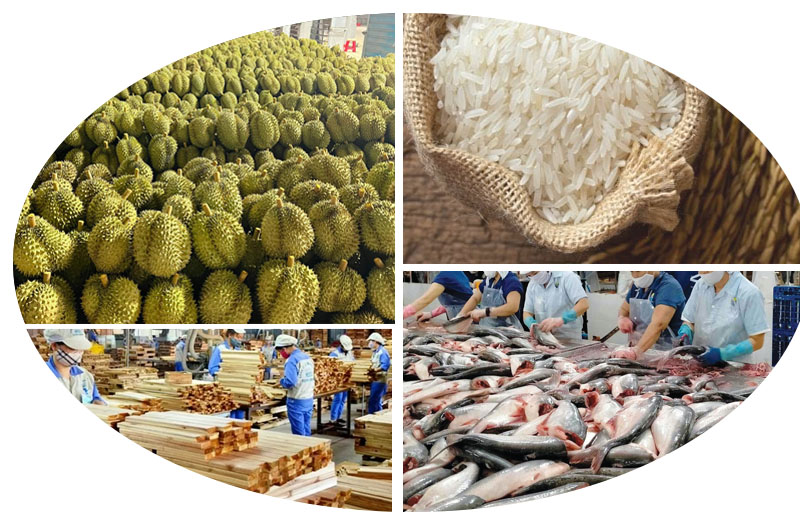
Summary
Vietnam’s agricultural sector is a global leader in exports like rice, coffee, and seafood, driven by favorable conditions and trade agreements. However, it faces challenges from high logistics costs, regulatory barriers, and competition. Imports, especially feed ingredients, are rising to meet growing domestic demand, with the U.S. as a key supplier despite tariff disadvantages. If you’d like, I can dig deeper into specific products, markets, or policies—just let me know!

DODO Global 股份公司在越南专业做进出口, 批发公司:洋葱,大蒜, 土豆, 胡萝卜, 蔬菜.
DODO在农业市场上拥有强大的影响力,为国内外买家提供高质量的大蒜、洋葱、土豆、生姜、辣椒、胡萝卜、蔬菜和水果,确保价格竞争力强且来源可靠,并出口越南农产品。
我们在网站、Facebook、YouTube、Tiktok、Instagram、LinkedIn 等平台上拥有营销系统,
拥有超过 200 万粉丝。我们在网站, 电子商务 卖产品
- 采购与贸易:与农民和全球供应商合作,提供优质产品
...........
Công ty cổ phần DoDo Global một trong những đơn vị chuyên về xuất nhập khẩu, phân phối và mua bán hành tây, tỏi , rau củ quả tại Việt Nam. Với nhiều năm kinh nghiệm trong lĩnh vực nông sản, đặc biệt là (tỏi và hành tây, gừng, ớt, khoai tây, cà rốt...) DODO đã khẳng định vị thế của mình trên thị trường trong nước và quốc tế.
DODO chia sẻ những sản phẩm tốt nhất, giá cả tốt nhất và phục vụ tốt nhất tới khách hàng.
Hiện tại DODO đã có hơn 2 triệu người theo dõi DODO trên các mạng xã hội như:
Facebook, Youtube, Tiktok, Instagarm, Linhkedin... để tất cả mọi người để tìm kiếm DODO.
...........
DODO Global Joint Stock Company is a reputable company specialising in importing, exporting, wholesale, and distributing vegetables and fruits. With a strong presence
in the agricultural market, DODO supplies high-quality Vegetables(garlic, onions, potatoes, ginger, chilli, carrot...) and fruit for domestic and international buyers,
ensuring competitive prices and reliable sourcing. and export Vietnam Agriculture.is a reputable company specialising in importing, exporting, wholesale, and distributing vegetables and fruits. With a strong presence
in the agricultural market, DODO supplies high-quality Vegetables(garlic, onions, potatoes, ginger, chilli, carrot...) and fruit for domestic and international buyers,
ensuring competitive prices and reliable sourcing. and export Vietnam Agriculture.
If you want to talk business? Let's connect/联系/ Liên hệ:
Wechat/ Whatsapp/ Line/ Viber/ Kakao talk: +84 0931 829 221
Email: dodofoods.vn@gmail.com
............................
Follow us on/ 关注我们/ Theo dõi chúng tôi:
Website: https: https://dodofood.vn/
Tiktok : https://www.tiktok.com/@dodoglobalfood
https://www.tiktok.com/@greenhousesg
YouTube: https://www.youtube.com/@DodoGlobal
Instagram: https://www.instagram.com/dodoglobalfood
https://www.instagram.com/greenfarmforum
Facebook: https://www.facebook.com/DoDoGlobalFood/
LinkedIn: https://www.linkedin.com/company/dodo-food/
https://www.linkedin.com/company/green-farm-forum/
